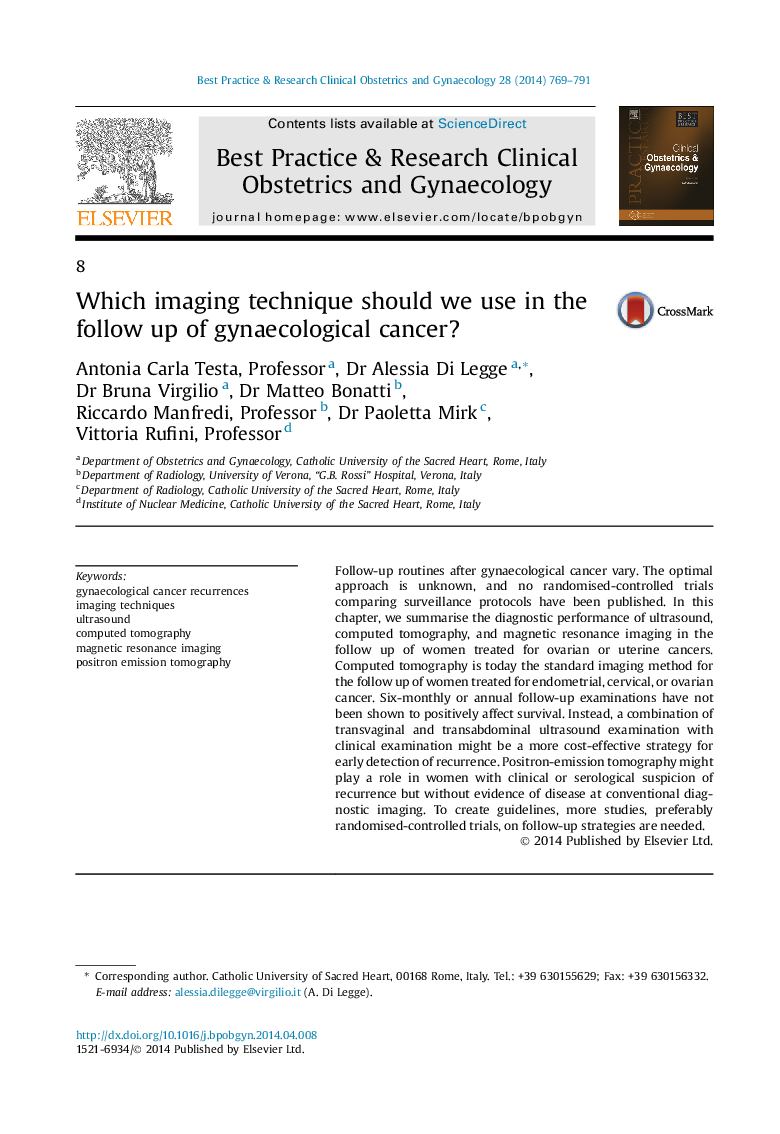| Article ID | Journal | Published Year | Pages | File Type |
|---|---|---|---|---|
| 3907323 | Best Practice & Research Clinical Obstetrics & Gynaecology | 2014 | 23 Pages |
Follow-up routines after gynaecological cancer vary. The optimal approach is unknown, and no randomised-controlled trials comparing surveillance protocols have been published. In this chapter, we summarise the diagnostic performance of ultrasound, computed tomography, and magnetic resonance imaging in the follow up of women treated for ovarian or uterine cancers. Computed tomography is today the standard imaging method for the follow up of women treated for endometrial, cervical, or ovarian cancer. Six-monthly or annual follow-up examinations have not been shown to positively affect survival. Instead, a combination of transvaginal and transabdominal ultrasound examination with clinical examination might be a more cost-effective strategy for early detection of recurrence. Positron-emission tomography might play a role in women with clinical or serological suspicion of recurrence but without evidence of disease at conventional diagnostic imaging. To create guidelines, more studies, preferably randomised-controlled trials, on follow-up strategies are needed.
